Packing for the Philippines? Having the right gear to explore this beautiful part of Asia can make or break your trip so after 4 trips, I’ve got you covered with the essentials you need.
Whether you’re planning to go island-hopping, exploring bustling cities, or just relaxing on white-sand beaches, having the right clothing and gear makes all the difference.
The weather is mostly hot and humid, but sudden rain showers can happen even during dry deason. So, packing smart is key.
I’ve put together the ultimate Philippines packing list detailing everything you need for a stress-free trip. Plus, some handy tips to make your packing even easier. So, let’s dive in!
Before you read on: Prepare for the thrilling hikes with these top tips for hiking as a beginner.
Disclaimer: This post contains affiliate links. If you purchase through these links, I may make a small commission at no additional cost to you. Thanks for your support!
Things to Know About the Climate Before You Go
Due to its geographical location, the Philippines generally has a tropical and oceanic climate characterized by warm temperatures and humidity all year round. There are two main seasons:
- Dry season (December to May): Best for beach trips, island-hopping, and sightseeing. This season can be further subdivided into: the cool dry season (December-February) and the hot dry season (March-May), but generally, days are hot, and the sun is strong.
- Rainy season (June to November): Expect frequent rain, especially in the afternoons. The season is marked by heavy rains and typhoons, so waterproof gear is a must.
The Philippines’ climate is quite predictable, with temperatures typically ranging between 77°F and 95°F (25°C and 35°C).
It’s best to pack lightweight, breathable clothes. If you’re heading to higher-altitude places like Sagada or Mount Pulag, bring a light jacket—it gets surprisingly chilly.
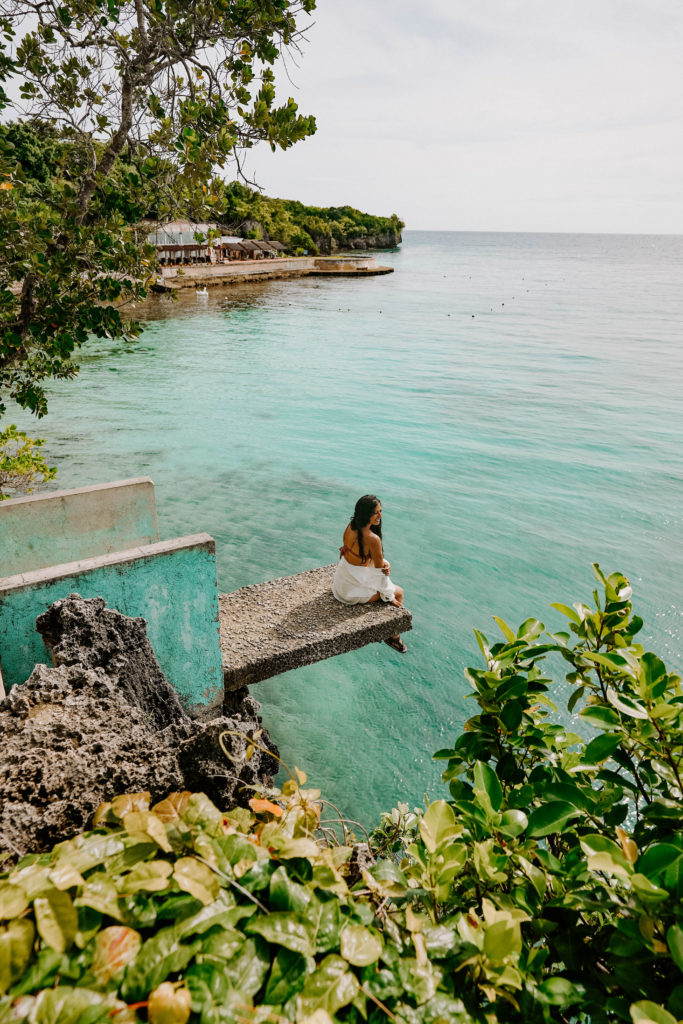
Your Ultimate Packing List for the Philippines
Now, let’s break down what to bring on your vacation to the Philippines based on the activities you’ll be doing, the adventures you’ll be taking, and the places you’ll be visiting during your trip.
What to Wear in the Philippines: Clothing and Footwear
The Philippines is an adventure destination, so you’ll likely be spending a lot of time outdoors, so light, comfortable clothing is best. And, of course, durable steady walking and waterproof shoes.
Here are some clothes to wear in the Philippines as well as shoes to have during your trip:
Tops
So you’ll need a variety of tops, from tank tops to long sleeves, to dress appropriately for every kind of weather you may come across. Here are a few basic tops to add to your list:
- T-shirts and tank tops – Perfect for sightseeing and everyday wear, moisture-wicking shirts and tank tops are a must-pack. Choose light colors to reflect heat—avoid black.
- Long-sleeve shirts – Many travelers won’t recommend bringing long-sleeve shirts, but these are useful for sun protection when hiking and good for keeping mosquitoes away.
- Lightweight rain jacket – A must if you’re visiting during the rainy season (or at any time during the year, really), lightweight rain jackets are a key factor to having a great trip.
- Swimsuit and cover-up – If you’re a beach lover, you’ll probably spend a lot of time in swimsuits. Bring swimsuit cover-ups as well so you can adjust your look as you go.
- Sundresses and/or rompers — Classic adventure travel attire. Rompers and sundresses are loose-fitted and comfortable. Bring a couple of jumpsuits for cooler days.
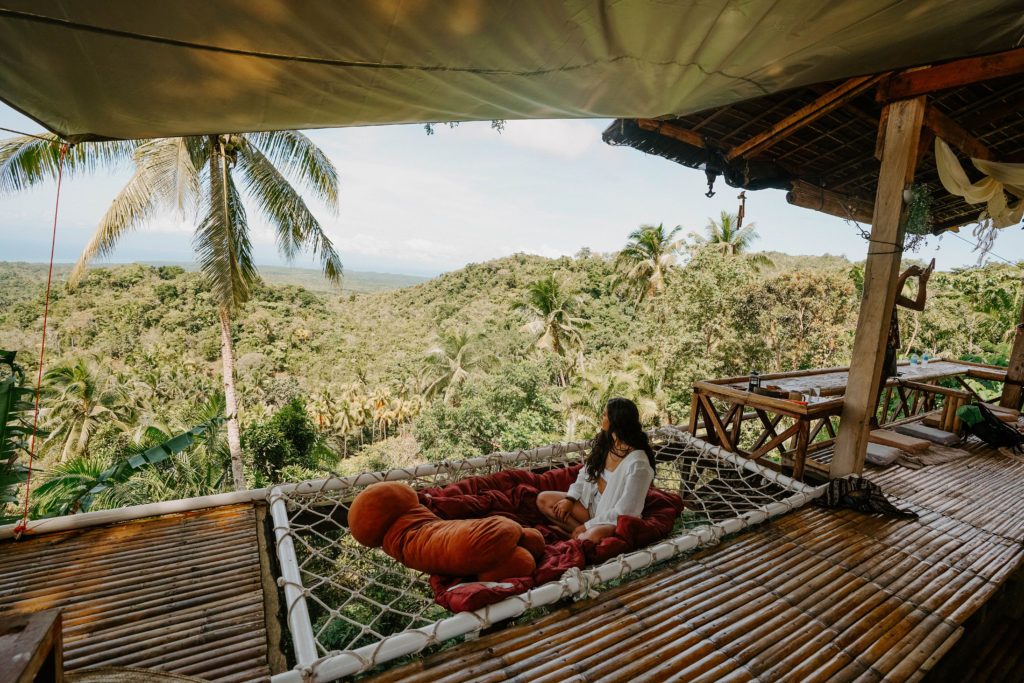
Bottoms
Equally, bringing the right bottoms is as important as tops. Here are a few must-bring bottoms to the Philippines:
- Leggings or joggers – A good pair of leggings or joggers is great for road travel between attractions, flights, or trekking.
- Light trousers – Handy for visiting religious sites, like Intramuros in Manila or temples in Cebu. Durable and light trousers are also great for mountain trips or cool weather days.
- Shorts and skirts – Great for beaches, boat rides, and city walks. Linen, silk, and cotton shorts and/or skirts are lightweight materials, while denim can feel heavy in the heat.
Footwear
The Philippines has diverse landscapes and terrains. Here are some of the shoes to bring:
- Comfortable sandals – A pair of sandals with straps work well for walking around towns and bustling markets and they’ll be your best friend when you go island hopping.
- Flip-flops – You’ll wear these everywhere. Flip-flops are essential for getting around when enjoying beach days, island-hopping, and, of course, those hostel showers.
- Hiking shoes or sneakers – If you’re planning to hike Taal Volcano, Batad Rice Terraces, or Mt. Pulag, having the proper hiking boots or footwear is non-negotiable.
What to Bring to the Philippines: Toiletries and Personal Items
Some things are harder to find outside big cities, so it’s good to bring your own. The Philippines is a developing nation, so while many products are available, unique ones can be hard to find.
Here are a few basic toiletries and personal items that you must bring:
- Reef-safe sunscreen – The sun is strong, especially in places like El Nido and Siargao. Choose a sunscreen with high SPF and an eco-friendly option to protect marine life.
- Toothbrush and toothpaste – Some budget hotels and hostels don’t offer these.
- Deodorant – It’s humid, so you’ll want to stay fresh.
- Shampoo and soap – Hotels often provide small bottles, but if you have personal preferences as far as brands and ingredients go, then it’s best to bring your own.
- Hand sanitizer – Useful for public transport, street food stalls, and rural areas.
- Wet wipes – Wilderness wipes are a lifesaver for freshening up after a long day of exploring.
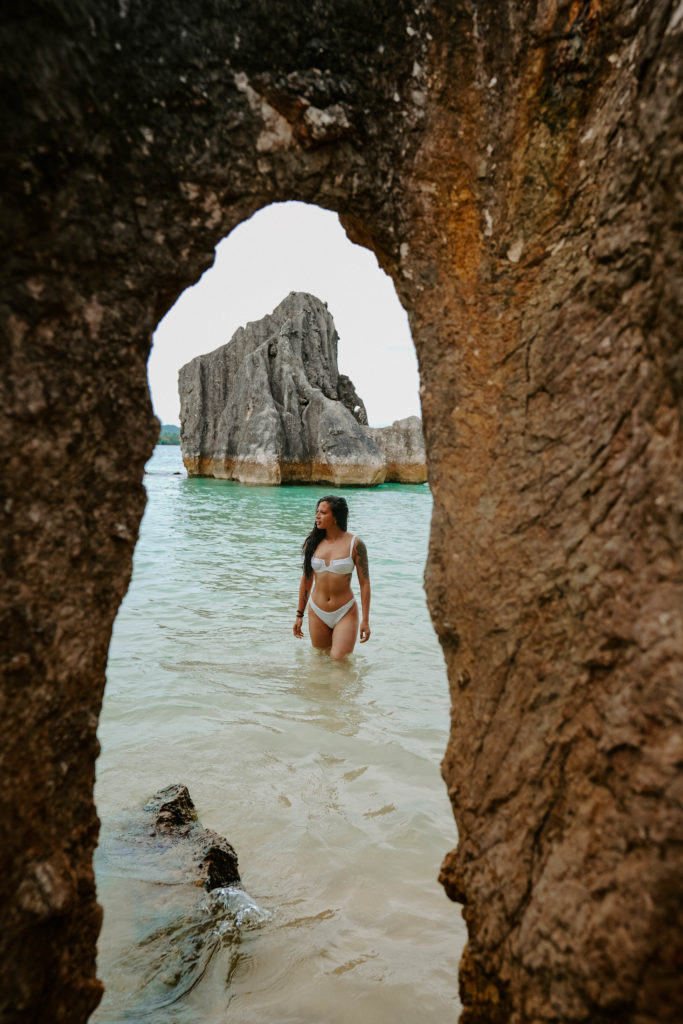
Must-Pack Travel Gadgets and Electronics
It goes without saying, but in this digital world—you’ll probably need gadgets and electronics. Here are some must-have items that, if you have them, can positively impact your trip:
- Universal adapter – The Philippines uses Type A, B, and C plugs, with 220V electricity. Having a universal adapter will make charging and staying connected much easier.
- Power bank – Some areas, especially remote islands like Coron and Siargao, have power outages. A power bank keeps your devices charged and you connected.
- Waterproof phone case – Perfect for snorkeling and kayaking in places like Honda Bay and Hundred Islands because waterproof pouches make snapping photos effortless.
- Camera, extra batteries, and memory cards – If you love photography, a GoPro or any waterproof camera (with its necessary accessories) is great for underwater shots.
- E-reader or book – Strange—but perfect for relaxing on long ferry rides or beach days.
- Dry bag – You’ll want to keep your gadgets dry when enjoying the beaches in Siquijor.
Essential Things to Bring to the Philippines: Health and Safety
Regardless of where you are in the world—having a health and safety packing list in check is fundamental. Here are some of the most important items to bring to ensure safe travel:
- First aid kit – Include band-aids, pain relievers, and motion sickness pills in your aid kit.
- Electrolyte tablets – Helpful if you get dehydrated, especially after hiking in the heat.
- Reusable water bottle – Tap water isn’t always safe to drink, so use a bottle with a filter.
- Insect repellent – Mosquitoes are a common nuisance and can spread diseases, so bringing insect repellent will help you.
- Face masks – Some places still require masks, and they help with air pollution in cities.
- Prescription medicines – Bring all your prescription medicines, along with antibiotics, altitude sickness medicine, diarrhea pills, antacids, and medication that prevents malaria.
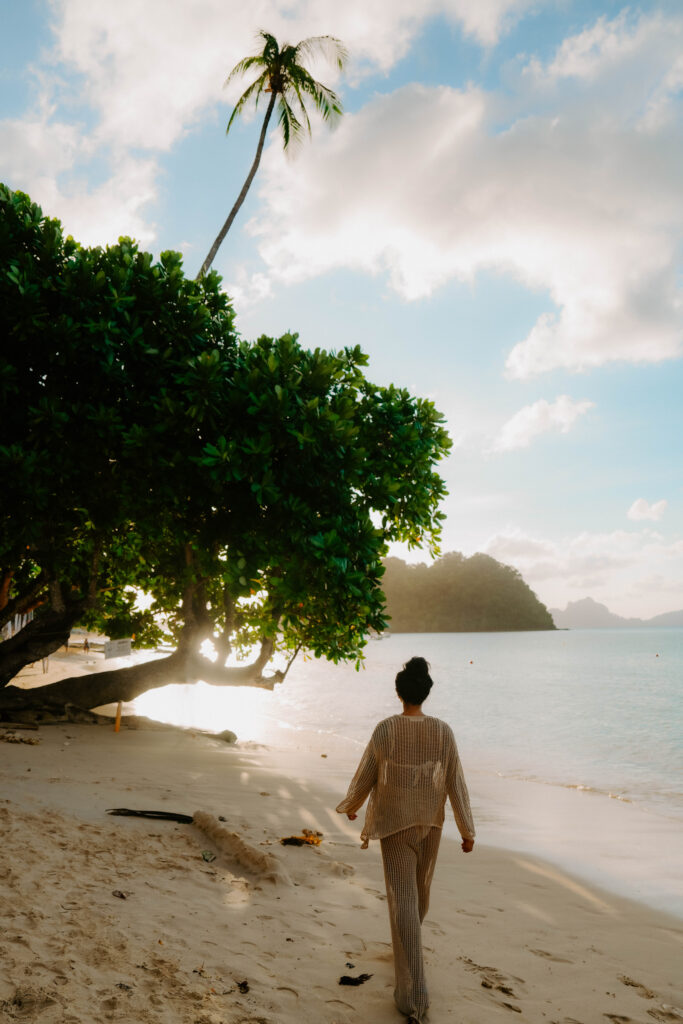
Must-Bring Travel Documents and Miscellaneous
Traveling is fun–but also a matter of national importance. You should always be able to produce travel documents that can identify you and say why you’re visiting the Philippines. Bring the following:
- Passport and visa – Make sure your passport is valid for at least six months.
- Copies of your passport – Useful if you lose the original.
- Travel insurance – Essential for medical emergencies, flight delays, or lost baggage.
- Credit/debit card and cash – ATMs are available, but smaller islands prefer cash.
- Hotel and flight details – Print them out or save them on your phone.
- Small backpack – Great for day trips. A daypack can carry a water bottle, energy snacks, first aid, mobile chargers and batteries, and anything else needed for a backpacking trip.
What to Pack for a Trip to the Philippines | Tips & Tricks
Now that you know how to dress in the Philippines and what gadgets or accessories to bring, let’s highlight some helpful tips to keep in mind when exploring this South Asian country.
- Pack light – You’ll likely be moving around a lot. A big, heavy suitcase is a hassle.
- Bring a dry bag – Super useful for boat trips, waterfalls, and kayaking adventures.
- Roll your clothes – Rolling your clothes or using packing cubes helps you save space and keep things neat in your luggage.
- Leave room for souvenirs – Handmade crafts, dried mangoes, and pearls are great take-home items.
- Check baggage limits – Domestic flights have strict weight limits.
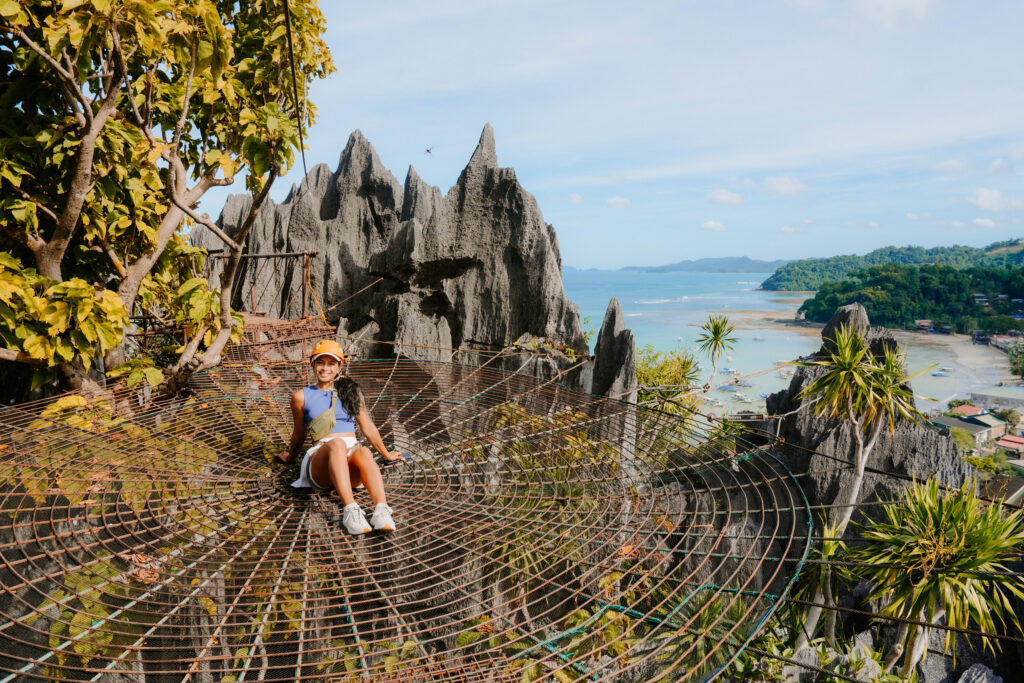
FAQs About Packing for the Philippines
Here are some common FAQs:
What to Wear in the Philippines for Females?
Light and breathable clothes are best. Dresses, shorts, and tank tops work well. In cities or religious sites, it’s always good to cover up with a light scarf or cardigan.
How Much Pocket Money Should I Bring to the Philippines?
It depends on your travel style. If you’re staying in budget hostels and eating local food, $25–$30 per day is enough. For mid-range hotels and restaurants, $50–$70 per day is better. Always carry some cash for small shops and transport. Rural areas are often only cash-based.
What Is Not Allowed to Bring to the Philippines?
A few things are strictly prohibited in the Philippines. Some banned items to bring are:
- Drugs and vape products – Strictly banned.
- Firearms and explosives – Not allowed unless with special permits.
- Certain fruits and plants – Some are restricted due to agricultural rules.
Wrapping Up What to Pack for the Philippines
The Philippines is an amazing place, and packing right makes your trip so much better. If you’re hopping between islands, diving with whale sharks, or just chilling by the beach, having the right gear will keep you comfortable and stress-free.
Safe travels, and enjoy your adventure!
Next Read: Things to Do in Siquijor, Philippines
